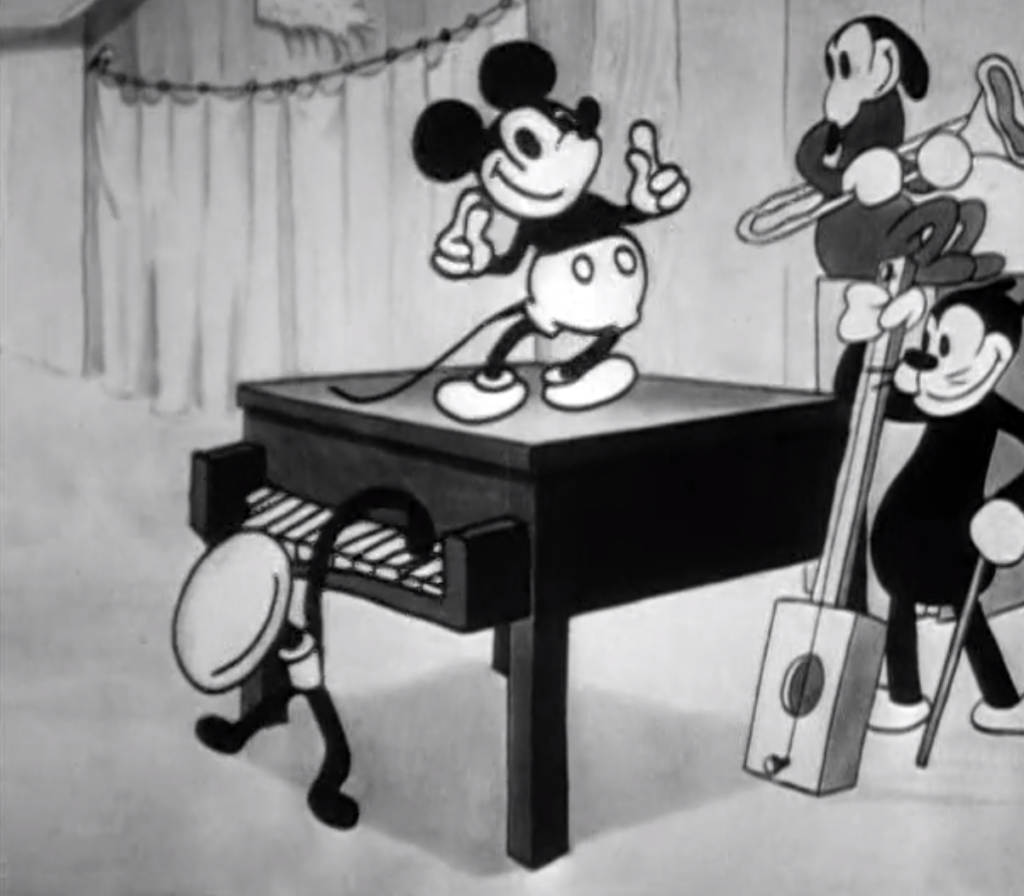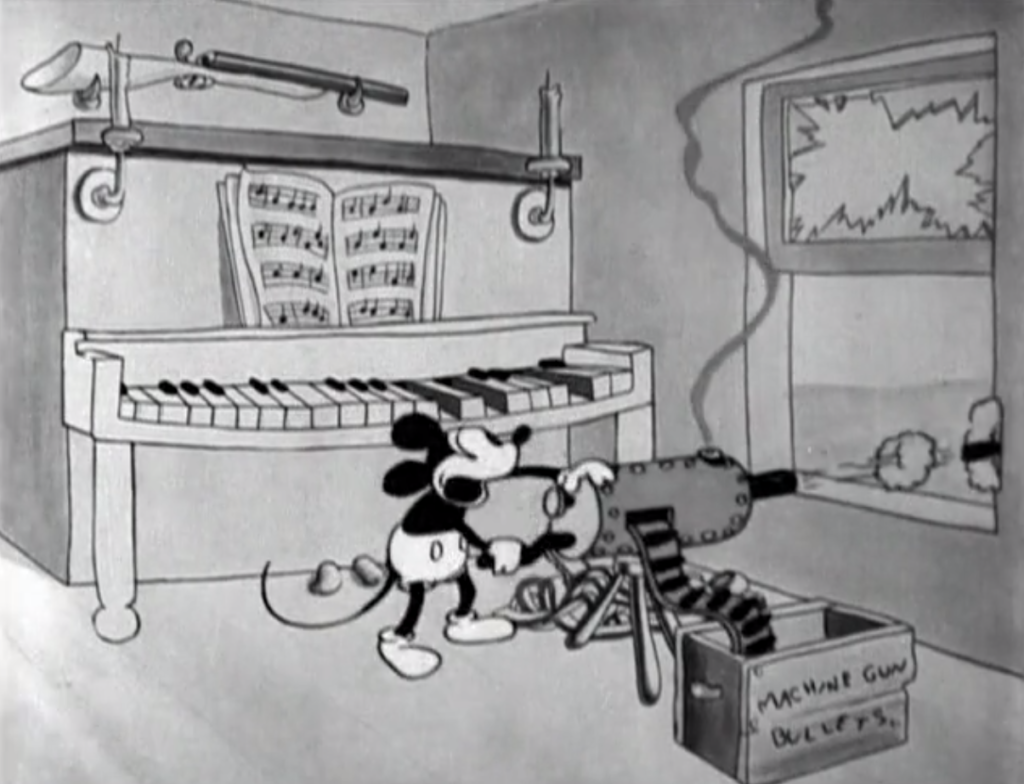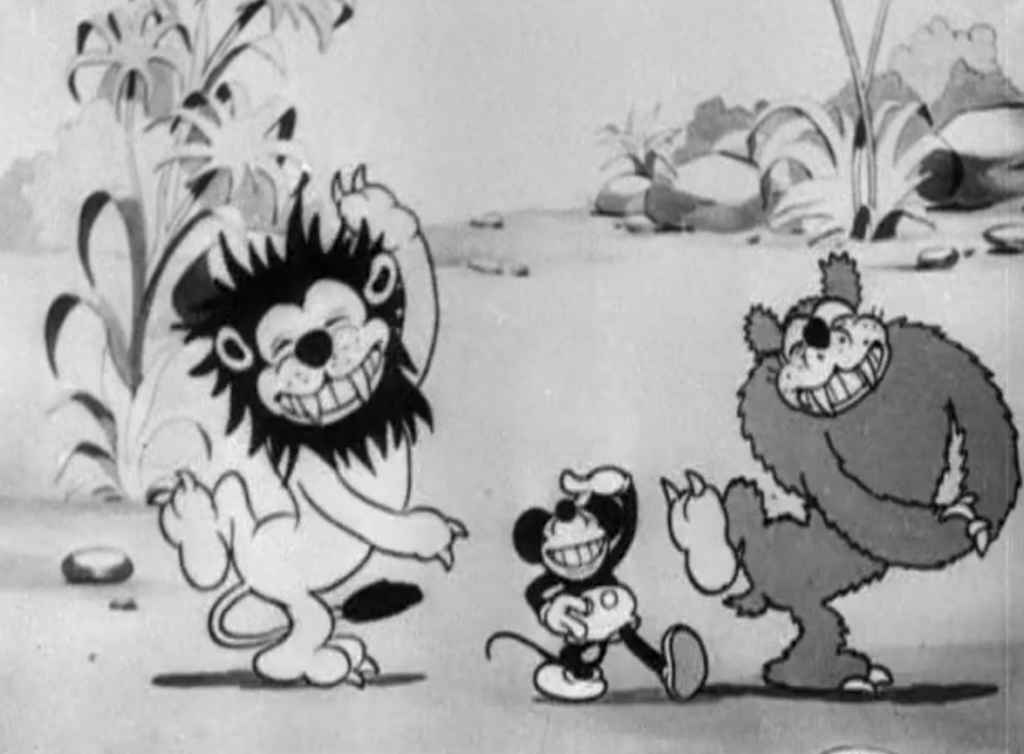The Barn Dance
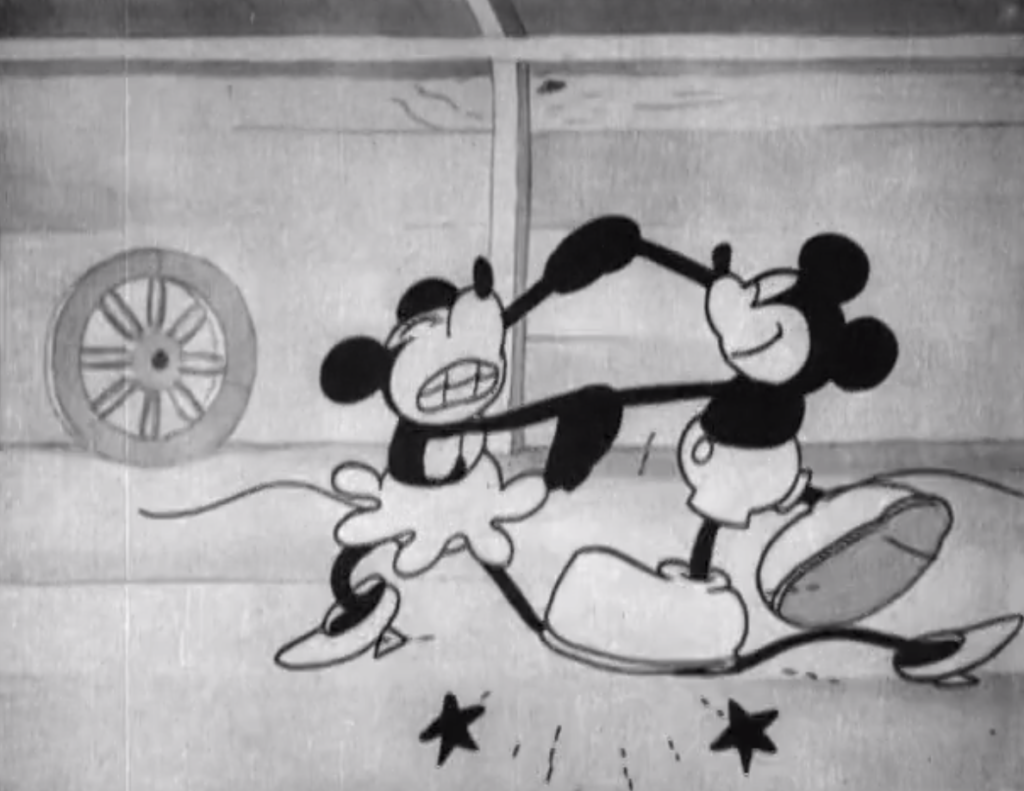
March 14, 1929 available in Mickey Mouse in Black and White, Volume 2
Mickey and Peg Leg Pete compete for Minnie’s affection, showing their peacock feathers in the form of vehicular pride. Upon Mickey’s triumph, he and Minnie go the barn dance. A pretty good short for what it is, good gags, simple but effective plot.
The Opry House
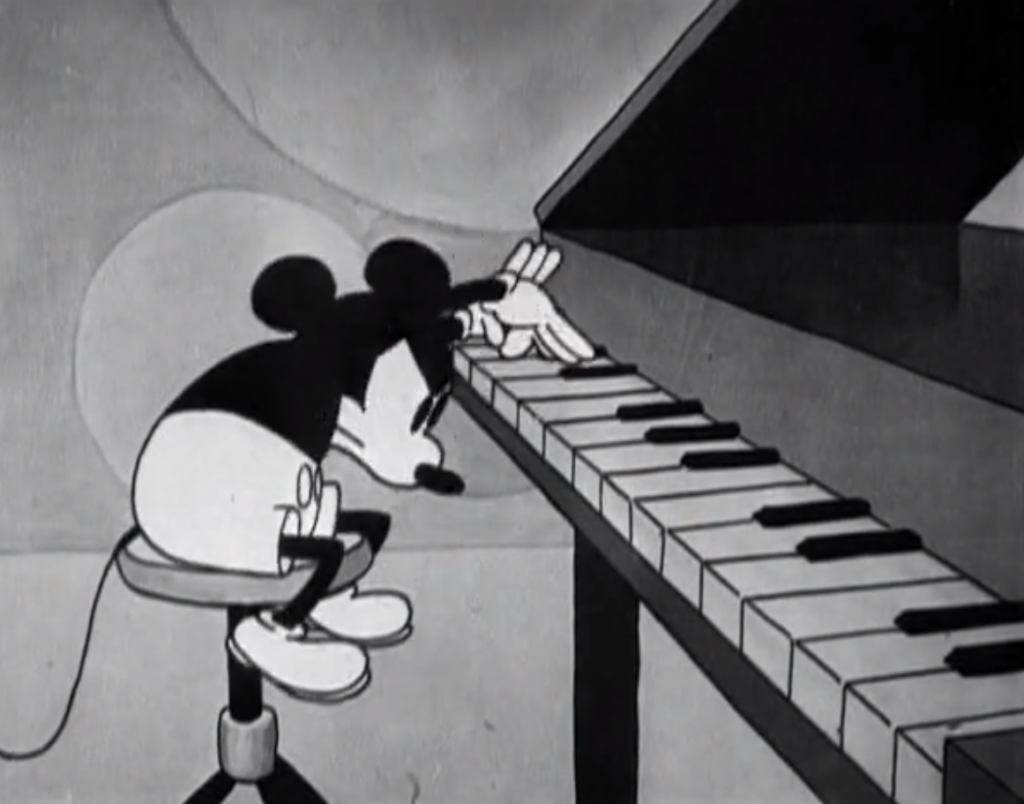
March 20 1929, available in the Mickey Mouse in Black and White, Volume 2
The vast majority of the early Disney cartoons are similar to this. There is a pretense for the characters performing some kind of musical number and then a number of visual gags to the music. This one has Mickey putting on a vaudeville show. It has some good visual surprises in it that I won’t spoil, but this is the first of many many cartoon shorts that take place as a show. As an entry in that genre, it’s merely ok.
When the Cat’s Away
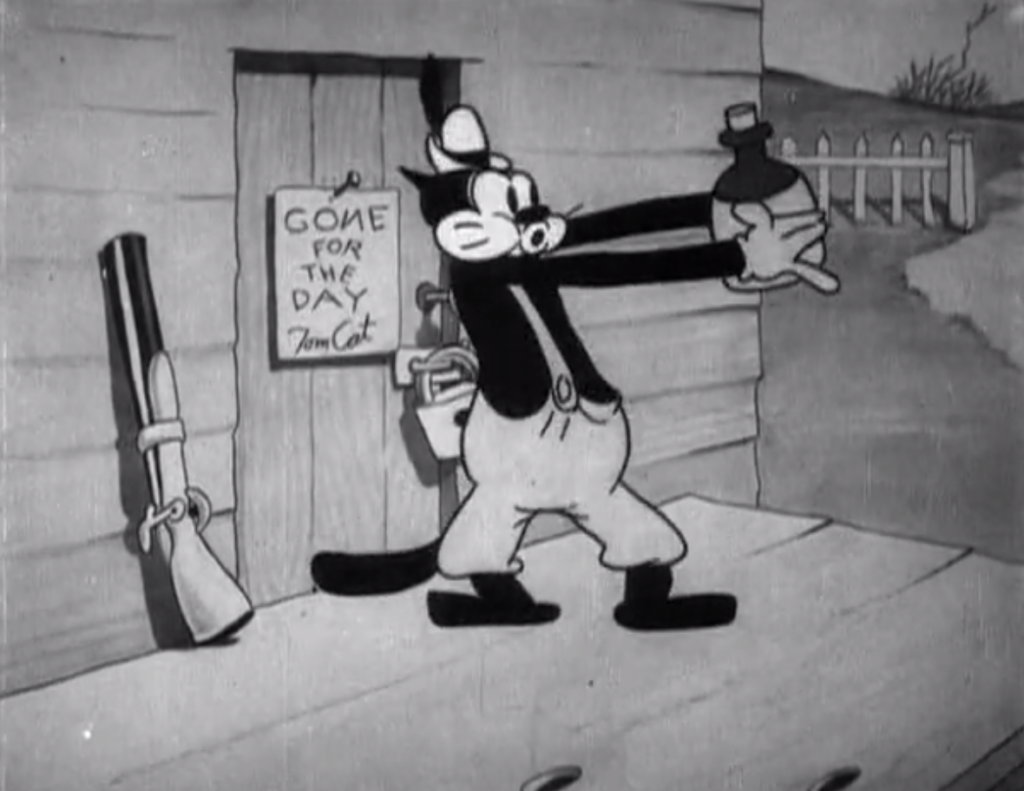
May 3, 1929, available in the Mickey Mouse in Black and White, Volume 2
The cat of the house goes out for a drunken hunting trip and a slew of mice rush in to take over the house. This is notable for the detail that was put into some of the early Disney shorts, with a dozen or so character on the screen at a time. But outside that, it’s mostly another typical entry in the “animation moves in sync with music” early days of cartoon shorts.
I do have a soft spot in my heart for the cat who lovingly hugs his moonshine.
The Plowboy
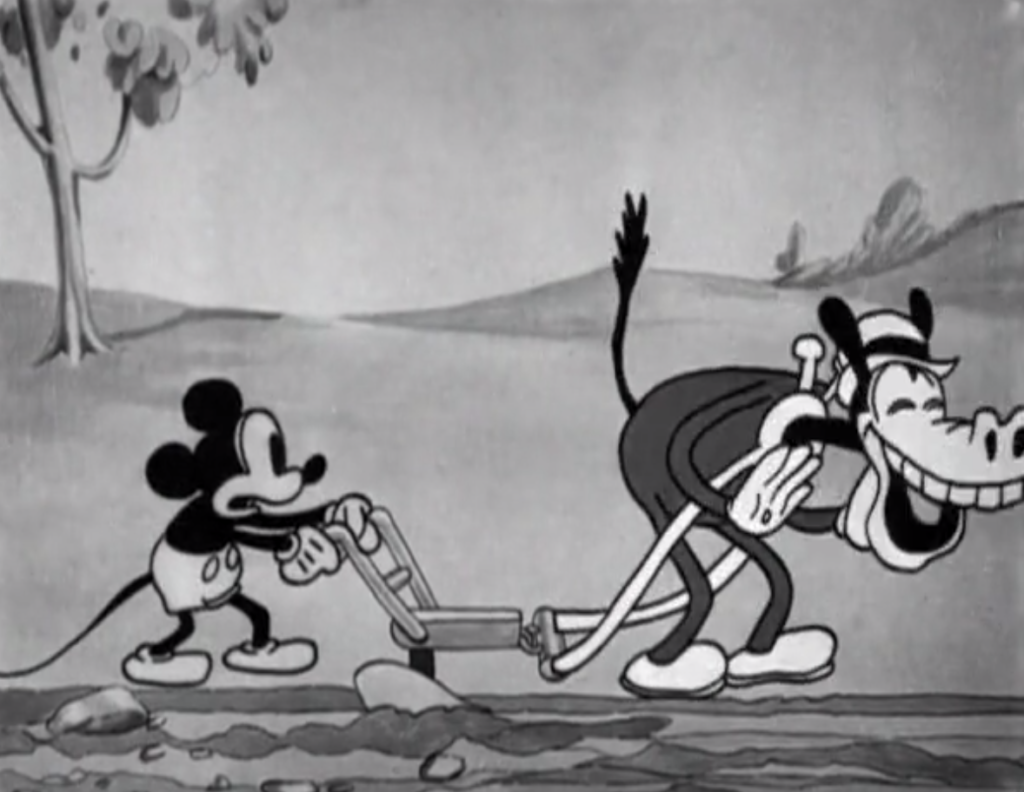
June 28, 1929, available in Mickey Mouse in Black and White, Volume 2
Mickey plows a field and attempts to woo Minnie Mouse by milking and abusing her cow. Horace Horsecollar makes an appearance as Mickey’s plow steed and, dear lord, why is Mickey also abusing that poor pig at the end? How much animal abuse is in these things?
The Karnival Kid
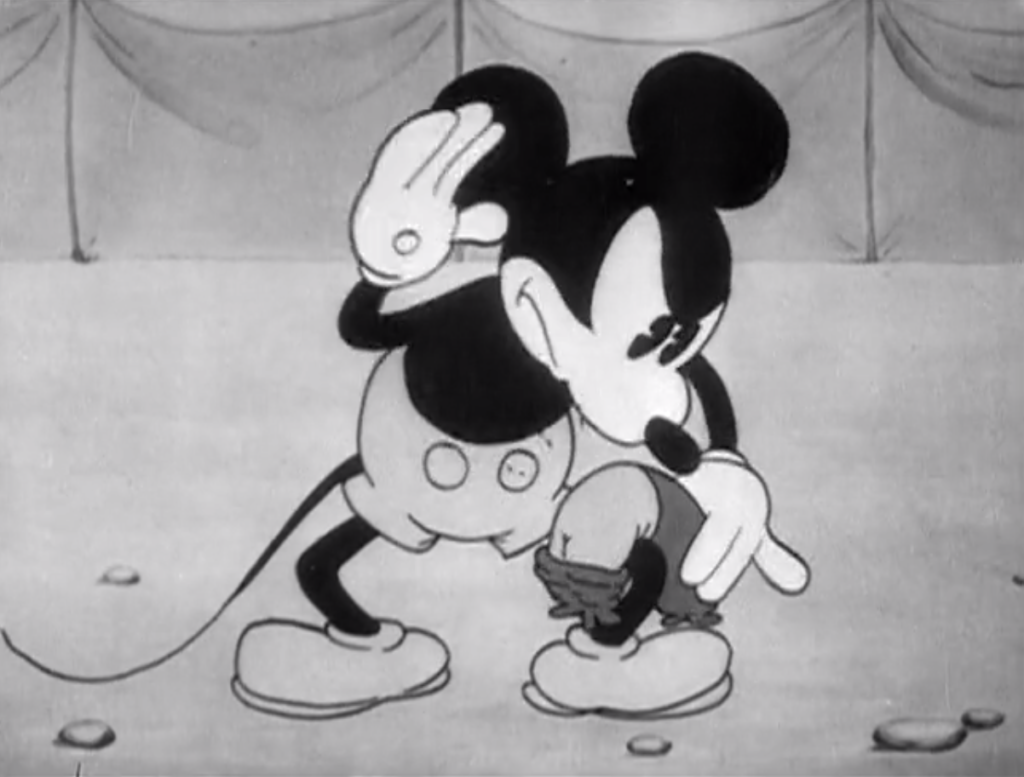
July 31, 1929 available in Mickey Mouse In Black and White
This short introduces us to a carnival and it is a strange one, although it does give us the joy of hearing Mickey sing “It’s a bum hooch dance, keep yer money in yer pants”, which is worth the price of admission. Instead of torturing animals, Mickey tortures anthropomorphic hot dogs. He also disciplines a disobedient hot dog by pulling down it’s little hot dog pants and spanking it’s bare hot dog bottom. Amazing.
The Skeleton Dance
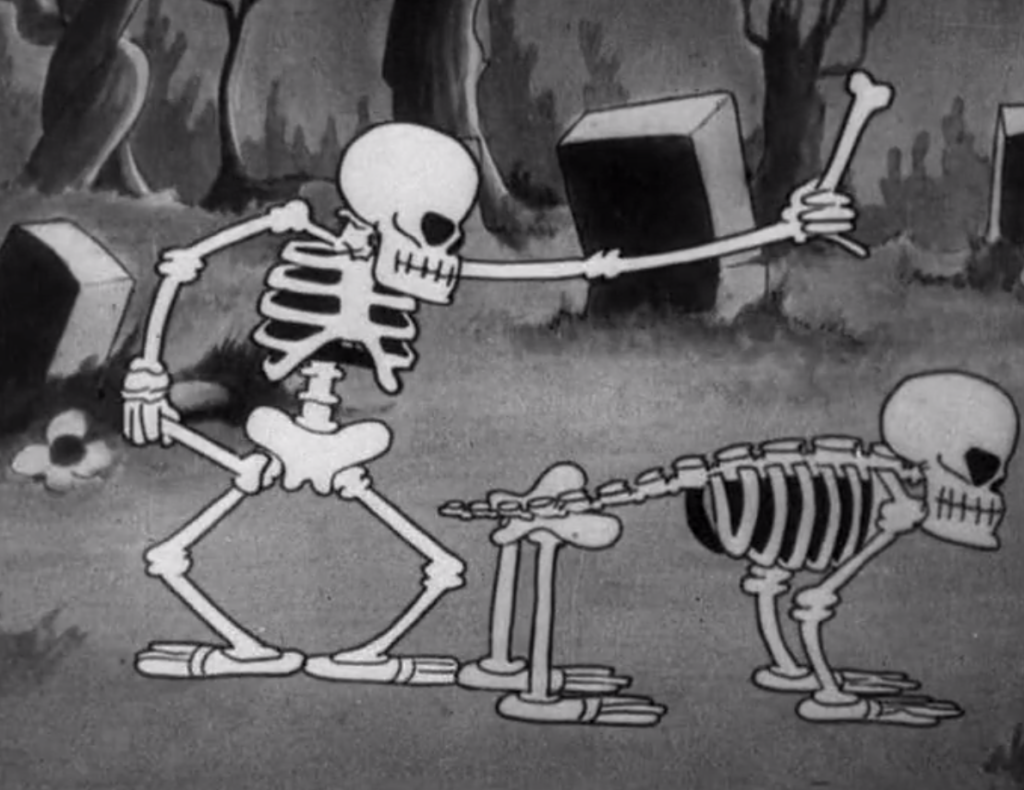
August 22, 1929, available on the Silly Symphonies Disney Treasures DVD
This is the first of the Silly Symphony series and you can tell that they made an above-and-beyond effort to bring higher quality orchestration to the short. The entire thing is just skeletons dancing to music, but the music is much better (better recording quality, more instruments, more grace and depth to it) than a typical short of the time. And the skeletons have plenty of decent gags to make it entertaining on its own.
Mickey’s Follies
August 28, 1929 – available on the Mickey Mouse in Black and White Disney Treasures DVD
More of the vaudeville routine genre of cartoon. This one was a little weird to me, especially the “domestic abuse as a dance” bit. It does feature Mickey singing his “theme song” (which is called “Minnie’s Yoo Hoo” I learned) in what is decidedly not the voice we associate with Mickey Mouse.
El Terrible Toreador
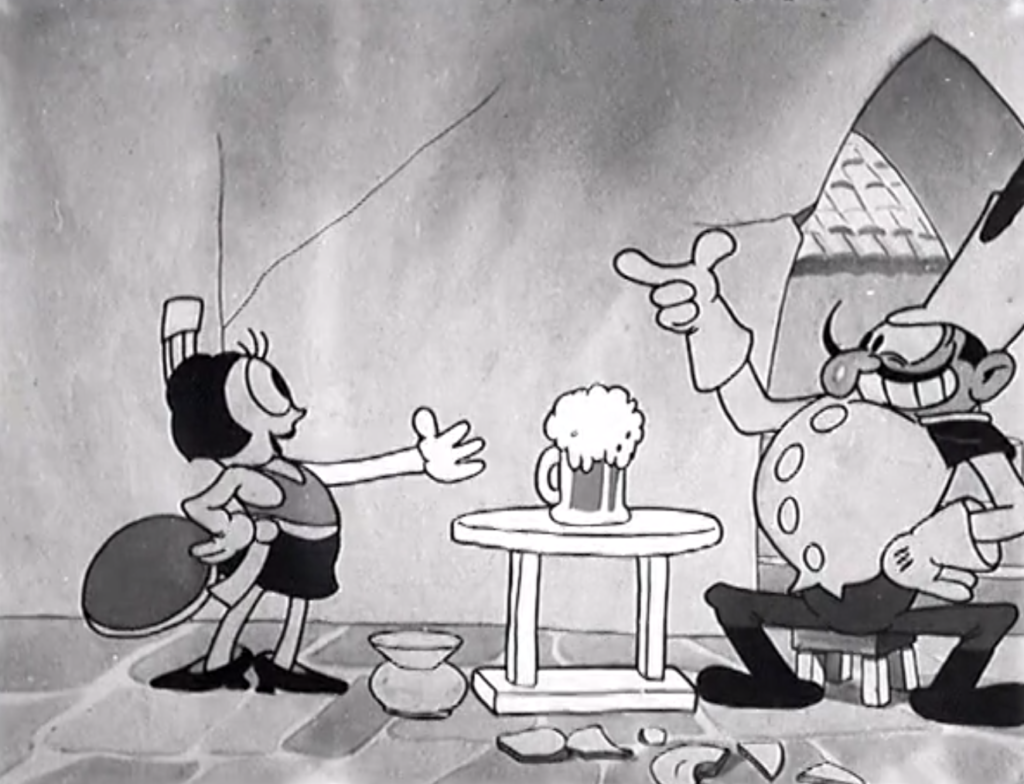
September 7, 1929 – available on the More Silly Symphonies DVD
There are some pretty solid gags in this piece about a lecherous toreador who fancies a bar maid until the arrival of a competing toreador catches her eye. We move quickly to a bullfight with absolutely hilarious interplay between the bull fighter and the bull.
This Silly Symphony plays much more like a Mickey Mouse piece. The good toreador is the hero seeking the favor of the lady and the bad one seeks to undermine him. The gags save this piece (the hero wins by TURNING THE BULL INSIDE OUT) but the narrative and overall concept suffer from the fact that the short defaults to a very basic melodramatic formula.
Mickey’s Choo Choo
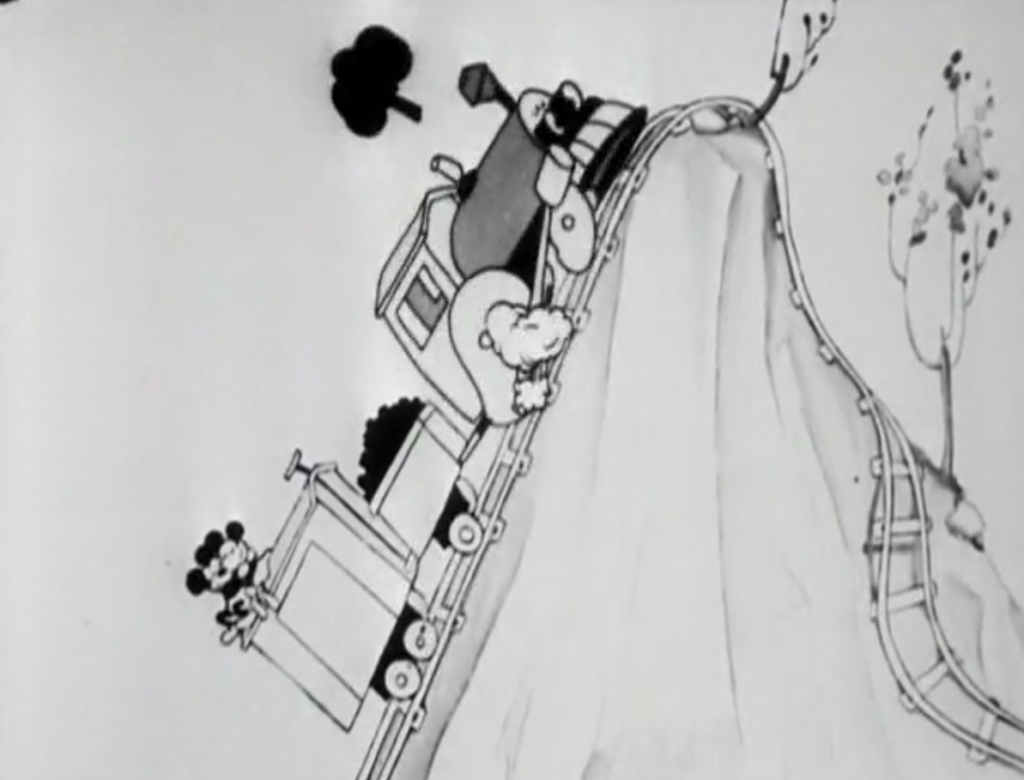
October 1, 1929 – available in Mickey Mouse in Black and White, Volume 2
Mickey is operating a train yard, but mostly another of the “music and dancing” genre of early shorts. It is fun to see a “runaway train” sequence where the animators are really going for the first person view to give a thrilling ride to the audience. Otherwise it’s a pretty standard cartoon.
The Barnyard Battle
October 10, 1929 – available in Mickey Mouse in Black and White, Volume 2
Mickey signs up for the mouse army to fight against what appear to be German cats. This one is more focused on the visual jokes and gags than simply syncing images to music and plays pretty well. There is, of course, abuse of other animals, but they are “The Enemy” so that is to be expected.
The Jazz Fool
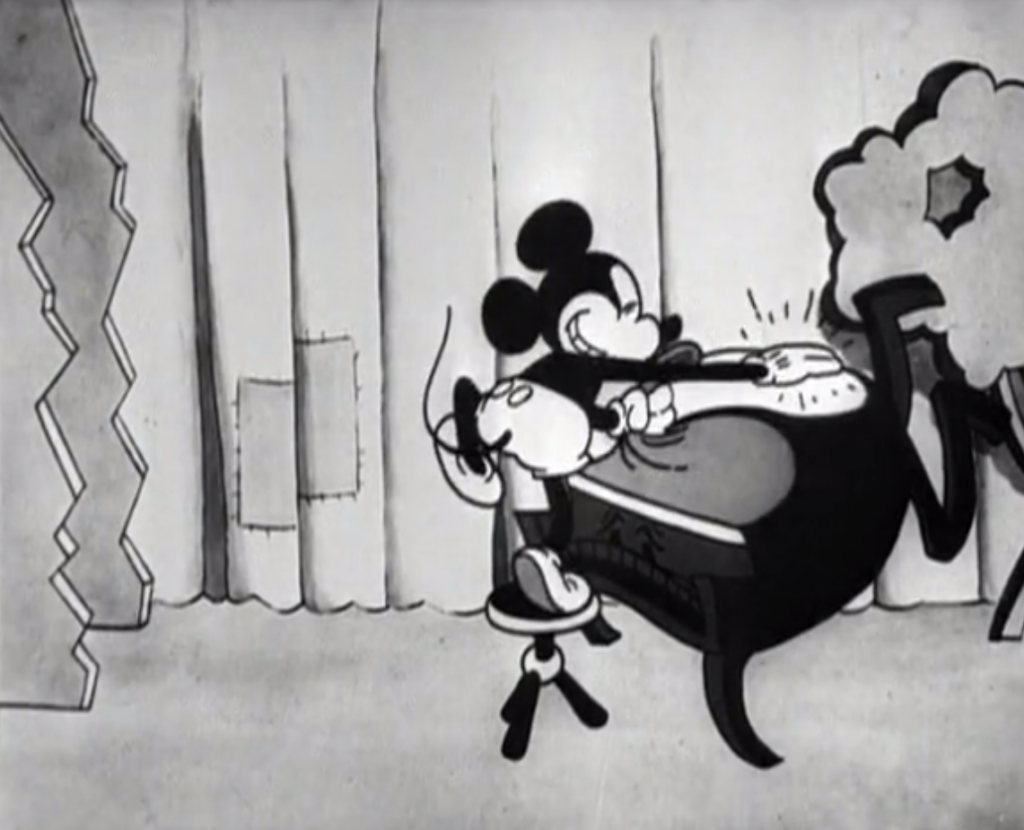
October 15, 1929 available in Mickey Mouse In Black and White Volume 2
Mickey is playing on a travelling organ while barn animals (and underwear off the clothesline) dance along to his music. This is another in the line of cartoons that are largely attempts to create compelling visuals to accompany music. To that end, I suppose it’s ok. But why is Mickey now spanking an anthropomorphic piano on its bare bottom? Ew.
Springtime
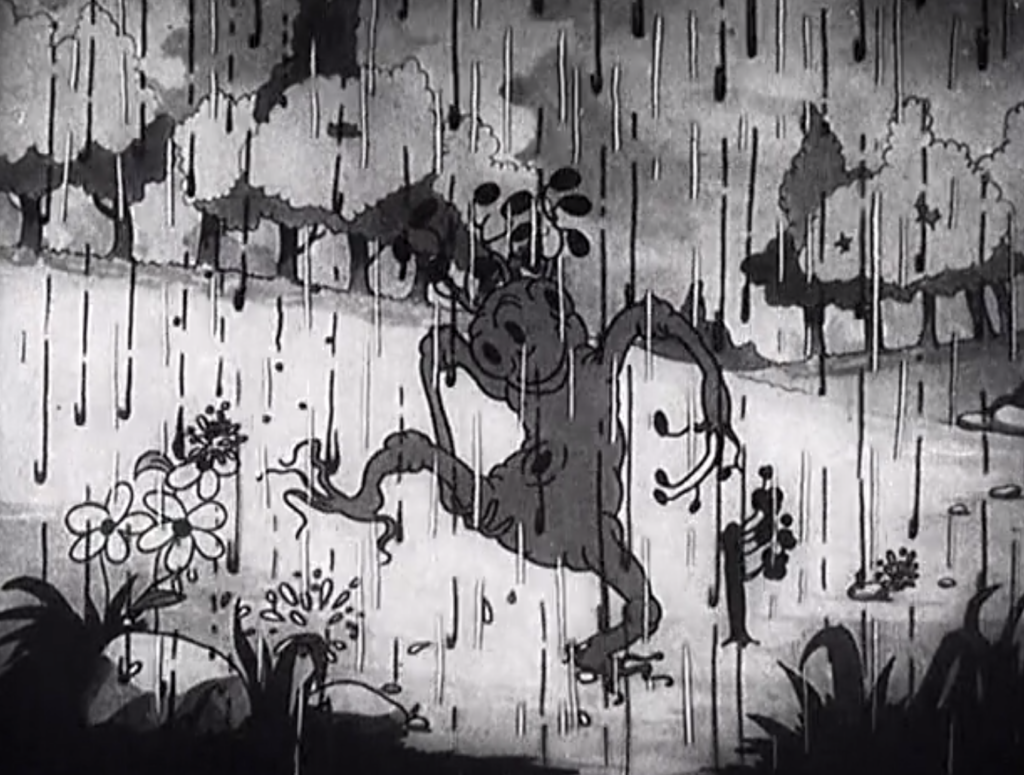
October 24, 1929 – available on the More Silly Symphonies DVD
This is a cartoon of pure fancy, the dancing of cartoon animals and plants serving little purpose outside of a joyful anthropomorphization of all things spring related.
This is fun. Cute. Not amazing, but well executed animation in service of an interesting sound track.
Hell’s Bells
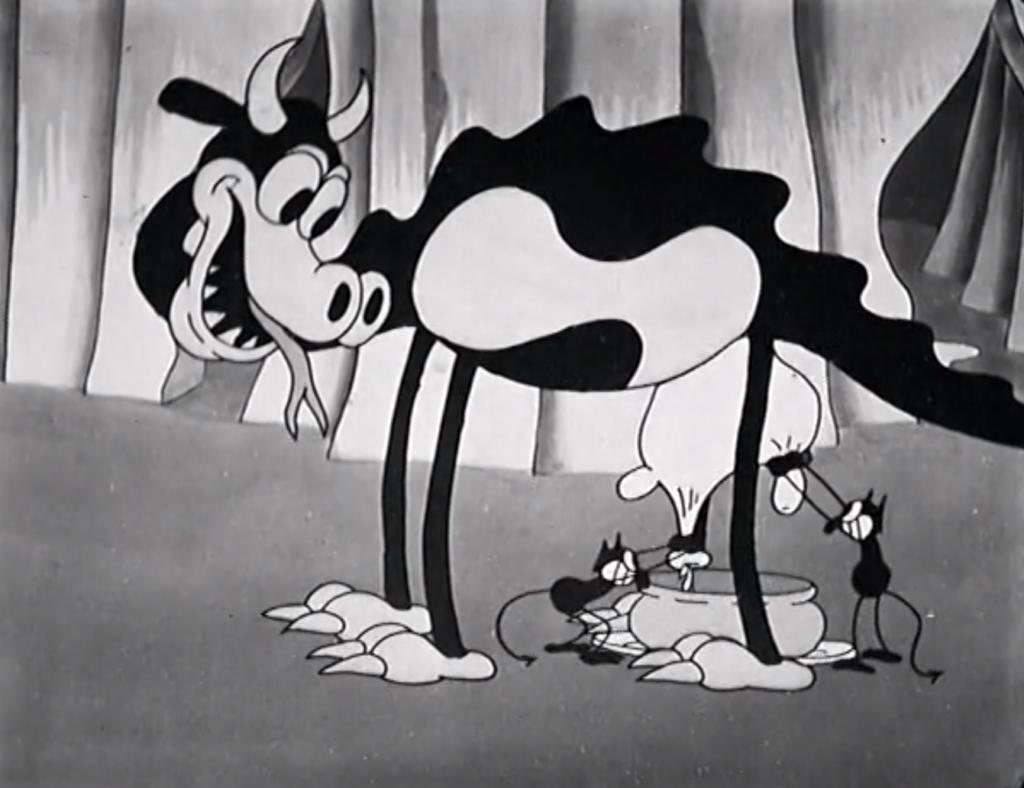
October 30, 1929 – available on the More Silly Symphonies DVD
What a wonderfully bizarre cartoon! Devils playing human skeletons as instruments! A Cerberus acting like a typical dog! Satan drinking the milk of a dragon cow! Just filled with strangeness and imagination.
Mind you, there is no plot to speak of and parts of this look like the Skeleton Dance except with devils instead of skeletons. But it works.
Jungle Rhythm
November 15, 1929 – available in Mickey Mouse in Black and White, Volume 2
Mickey is traversing the jungle on what seems to be an incredibly unsuccessful hunting trip. When trapped between a lion and a bear, the music breaks out and the rest of the cartoon is basically another of the vaudeville episodes but in the jungle.
Someone needs to keep track of all the different kinds of animals Mickey uses as instruments. This one had him playing music on a bear, a lion, monkeys, a toucan, several other birds, a set of baby tigers, and what looked like a small leopard.
Haunted House
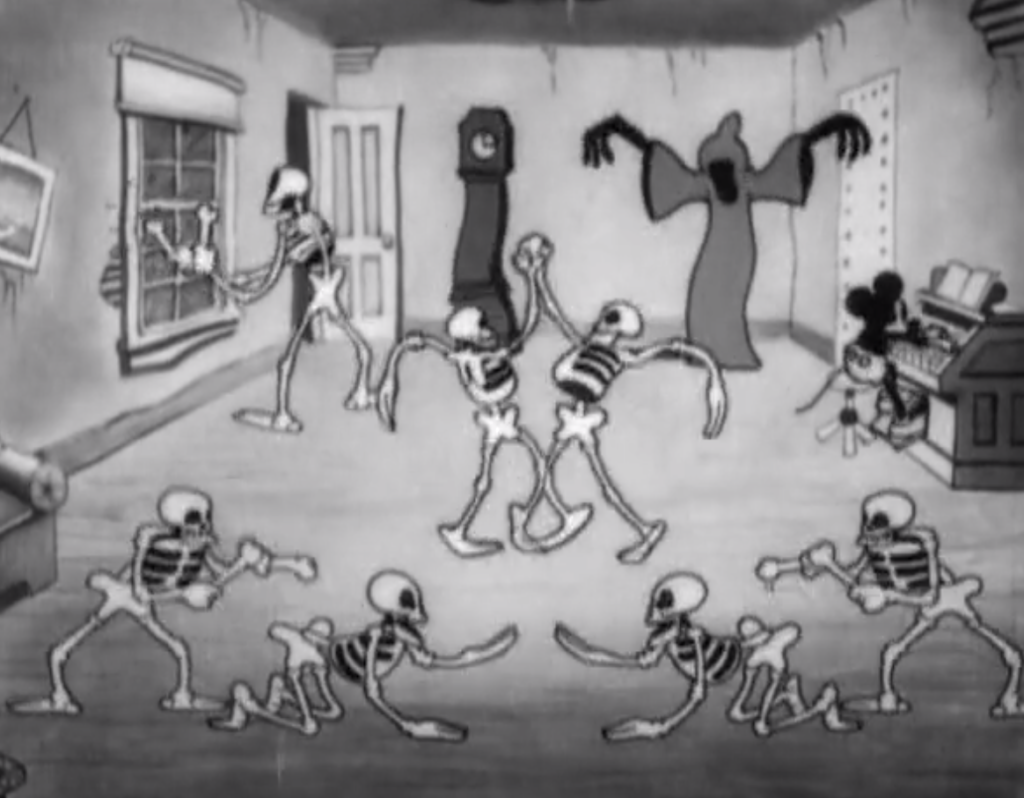
December 2, 1929 – available in Mickey Mouse in Black and White, Volume 2
I really like this one, but I’m not sure if it is because I liked it as a kid or because it’s actually good. It does have a plot, which is nice. Mickey is travelling alone when a storm breaks out and he takes refuge in a haunted house. The house torments him a little bit before a ghoul forces him to play the organ.
The middle section plays out like a sequel to the Skeleton Dance (released only a 3 months prior to this). The music is quite good, better than most, but there are certain skeleton dancing gags that are directly from that short. In the end Mickey escapes, so in that sense it does have a more modern “beginning-middle-end” narrative structure.
The Merry Dwarfs
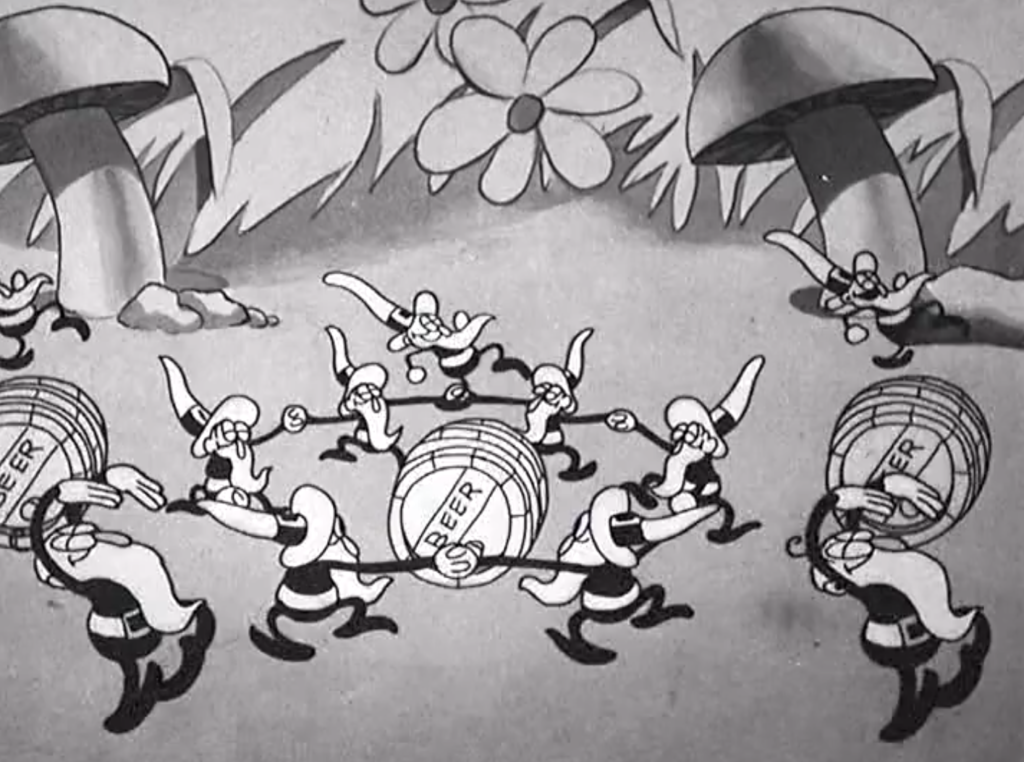
December 16, 1929 – available on the More Silly Symphonies DVD
A strange little piece, this short follows a colony of dwarfs around as they frolic and drink a lot of beer. It’s cute and well drawn, but nothing about it really stands out.
